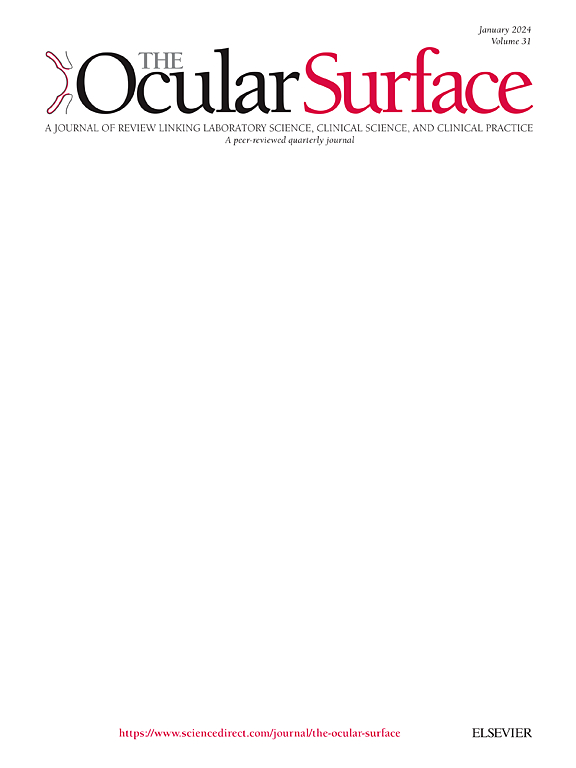角膜缘干细胞缺乏的IVCM图像分析:角膜上皮移植后恢复的定量诊断
IF 5.6
1区 医学
Q1 OPHTHALMOLOGY
引用次数: 0
摘要
角膜缘干细胞缺乏症(LSCD)是由维持角膜上皮的角膜缘干细胞(LSCs)功能障碍引起的一种视力威胁疾病。LSCD的一种有效治疗方法是将离体培养的LSCs从患者健康的另一只眼(单侧病例)或供体眼(双侧病例)移植到受影响的眼睛。在这里,我们使用细胞图像确定和量化lsc移植后角膜上皮恢复的诊断和监测标准。本文章由计算机程序翻译,如有差异,请以英文原文为准。
IVCM image analysis for limbal stem cell deficiency: quantitative diagnostics of the corneal epithelium post-transplant recovery
Purpose
Limbal stem cell deficiency (LSCD), a sight-threatening condition, is caused by dysfunction of the limbal stem cells (LSCs) which maintain the corneal epithelium. An effective treatment of LSCD is the transplantation of ex-vivo cultured LSCs from the patient's healthy other eye (in unilateral cases) or a donor eye (in bilateral cases) to the affected eye. Here we identify and quantify diagnostic and monitoring criteria for the recovery of the corneal epithelium post-LSC transplant using cellular images.
Methods
We consider the in-vivo confocal microscopy (IVCM) images from 10 patients with total unilateral LSCD caused by chemical burns, taken before and after LSC transplant. Images encompass the entire thickness of the corneal epithelium in the central and four peripheral regions. Approximately 1500 images were segmented using a bespoke algorithm to extract morphological data for analysis.
Results
The probability density of cell areas is shown to be a sensitive monitoring tool of corneal epithelial status. After a successful operation the distribution of cell areas is rather flat, reflecting an anomalously wide range of cell areas. As the cornea recovers, the distribution narrows with high statistical confidence and approaches that of the healthy cornea. We find a strong patient-to-patient variability in the epithelial cell area distribution and its variation with corneal depth. The corneal epithelial cell shape is independent of the cornea status despite a widespread expectation that healthy cells are roughly hexagonal.
Conclusion
Cell area is a sensitive and easily accessible marker of corneal epithelial recovery in LSCD patients post-LSC transplant.
求助全文
通过发布文献求助,成功后即可免费获取论文全文。
去求助
来源期刊

Ocular Surface
医学-眼科学
CiteScore
11.60
自引率
14.10%
发文量
97
审稿时长
39 days
期刊介绍:
The Ocular Surface, a quarterly, a peer-reviewed journal, is an authoritative resource that integrates and interprets major findings in diverse fields related to the ocular surface, including ophthalmology, optometry, genetics, molecular biology, pharmacology, immunology, infectious disease, and epidemiology. Its critical review articles cover the most current knowledge on medical and surgical management of ocular surface pathology, new understandings of ocular surface physiology, the meaning of recent discoveries on how the ocular surface responds to injury and disease, and updates on drug and device development. The journal also publishes select original research reports and articles describing cutting-edge techniques and technology in the field.
Benefits to authors
We also provide many author benefits, such as free PDFs, a liberal copyright policy, special discounts on Elsevier publications and much more. Please click here for more information on our author services.
Please see our Guide for Authors for information on article submission. If you require any further information or help, please visit our Support Center
 求助内容:
求助内容: 应助结果提醒方式:
应助结果提醒方式:


